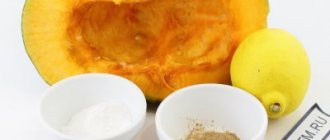Caring for broccoli seedlings at home
The health and quality of the plants, as well as the future harvest, depend on how well the seedlings are cared for. Therefore, seedlings need to be provided with appropriate conditions in which they will feel as comfortable as possible.
Temperature and lighting
Temperature is one of the main factors for the proper development of seedlings. After sowing the seeds, containers with seedlings should be in a warm place with a temperature of +18–20˚С. When seedlings appear, these values must be lowered: in sunny weather to +15–17˚С, in cloudy weather – +12–13˚С, and at night the indicator should be about +8–10˚С.
When growing broccoli seedlings, it is important to observe the temperature regime: in sunny weather up to +15–17˚С, in cloudy weather – +12–13˚С, and at night the indicator should be about +8–10˚С
Video: what to do with broccoli sprouts
Broccoli is a light-loving crop. First of all, it is worth considering that seeds for seedlings are sown in March, when daylight hours are quite short. Therefore, it will be necessary to organize additional lighting, which can be used as phyto- or LED lamps. It is believed that fluorescent lamps are not suitable for cabbage due to a different light spectrum. Young seedlings should be illuminated for 15 hours. The light source is placed above the plants at a height of 20 cm.
With a lack of sunlight, broccoli seedlings need additional lighting
Watering
Any variety of cabbage loves moisture, the lack of which leads to the death of plants. However, waterlogging of the soil contributes to the occurrence of dangerous diseases such as clubroot and blackleg. This suggests that irrigation should be carried out as the top layer of soil dries, and the room with seedlings should be periodically ventilated.
Latest posts How I protect seedlings from my curious cats What is important to do with coniferous plants in your garden in the spring 6 dwarf coniferous trees for decorating a small area
Broccoli is moisture-loving, so the soil should not be allowed to dry out, but there is also no need to flood the plants.
Picking
Seedlings are picked at the age of two weeks. As a container, you can use any suitable sized pots, cups, cut plastic bottles, etc. However, peat pots are considered the most convenient option, since the plants from them do not need to be replanted
When diving, special care should be taken to avoid damage to the roots. Otherwise, the growth and development of seedlings will be slow
When picking broccoli seedlings, the plants are transplanted into a separate container for the normal development of the leaf and root parts
Containers with seedlings are pre-watered to make the plants easier to remove. The rest of the process boils down to the following steps:
- As a soil for picking, use the same soil mixture as when sowing seeds, pre-moistening it from a sprayer.
- Make holes for plants.
- Using a special spatula or a flat wooden stick, remove the sprout from the nursery and place it in a separate container, compacting the soil and spraying it.
Until the broccoli seedlings take root, you need to protect them from direct sunlight and provide a temperature of +20–22˚С.
Video: how to pick broccoli seedlings
Top dressing
Full development of young plants is impossible without additional nutrition. Seedlings can be fed 2–3 days after planting with a solution of nitroammophoska. To prepare a nutrient solution, dissolve 1 tbsp in a bucket of water. l. fertilizers 50 g of the substance is poured into one container with a plant. After this, the temperature during the day is lowered to +16–18˚С, at night it is maintained at +8–10˚С.
Hardening
Before planting broccoli seedlings in open ground, the plants must be hardened off. They do this so that they get used to conditions as close as possible to open ground. The procedure begins two weeks before the cabbage is planted in the garden. First, the seedlings are taken out onto the balcony or loggia for several hours. Gradually the time is increased, and in the last days the plants are left overnight.
In order for broccoli seedlings to adapt to external conditions, a hardening procedure is carried out
Features of broccoli
This culture is known primarily for its anti-cancer and dietary properties, in addition, it stimulates the process of blood formation. Broccoli is especially beneficial for those who suffer from diabetes or heart disease, and due to its high amount of fiber and folic acid, cabbage is also recommended for pregnant women.
Broccoli - beneficial properties
Nutritional value and chemical composition
Broccoli is a crop from the cruciferous family, the stems of which can reach 0.8-0.9 m in height. Many buds are formed in the upper part of the stems - they are edible. Externally, the crop resembles cauliflower, but differs favorably from it in that it forms several heads at once.
Growing broccoli in the garden
Broccoli can be of two types, let's look at them.
- Asparagus. It has a large number of heads on thin stems. In this case, it is the stems that are edible, which are very similar to asparagus (hence the name). Inflorescences can be either green or purple.
- Calabrian. A fairly large head of cabbage, located on a massive stem. Very similar to cauliflower, only the inflorescences are green. Although there are also varieties with white inflorescences.
Types of broccoli
Broccoli Romanesco
The described culture is considered one of the most unpretentious representatives of the family. It should not be shaded, because it loves light. Moreover, due to shading, heads that are too small may form. The acidity of the soil should be from 6.7 to 7.4 pH. Potatoes, onions, pumpkins, carrots, cucumbers, legumes and grains can act as plant precursors.
Express analysis of soil acidity
The process of growing broccoli, as already noted, is extremely simple. The crop can even be grown on a windowsill, although that’s not what we’re talking about now. Today you will learn how to grow broccoli in your garden.
Beneficial features
Like many other vegetables, broccoli and cauliflower contain fiber necessary for the digestive process, so these products are low in calories and useful for weight loss. Also, these cruciferous vegetables are important for humans due to their rich content of vitamins, amino acids and minerals, but cauliflower is inferior in terms of their content. A notable feature of these cruciferous vegetables is the fact that they cannot cause harm, because... do not have the ability to provoke an allergic reaction.
Both plants contain water, fiber, vitamins, various amino acids and mineral elements. Vitamin U is effective for various ulcers, A-retinol has a beneficial effect on many organ systems, especially the eyes, E-tocopherol is necessary for the proper functioning of the reproductive system, ascorbic acid helps the body fight viral diseases and develop strong immunity to them.
Characteristics of broccoli
Broccoli is an annual plant that, unlike its other relatives, forms inflorescences in the first year. It is not the leaves and stems that are eaten, but the unopened buds.
Broccoli is very similar to its closest relative, cauliflower, but at the same time significantly surpasses it in taste and content of nutrients. Broccoli is often called cabbage because of its delicate flavor.
Young, unopened broccoli florets taste like asparagus
To get a good harvest of this crop on your personal plot, you should remember some of its features:
- Like other types of cabbage, broccoli is very moisture-loving. Optimal soil moisture is 70%.
- The culture grows best in cool conditions (16–20° C).
- An adult plant easily tolerates frost.
- Unlike cauliflower, broccoli heads do not need shade.
- After cutting the central head, new side shoots grow on the stems, which provide additional yield.
Benefits and harms
Generally:
- Broccoli contains many vitamins - C, B1, B2, B5, B6, E, K, PP, folic acid, provitamin A, beta-carotene, as well as important microelements: potassium, calcium, phosphorus, manganese, iron, zinc, sulfur, selenium.
- It contains the amino acids methionine and choline, which resist the accumulation of cholesterol in the body. In addition, broccoli contains sulforaphane, a substance that has anti-cancer and antibacterial properties.
- There is more protein in broccoli than in other types of cabbage - about the same as in a chicken egg or beef.
- Eating broccoli optimizes human metabolism - the musculoskeletal system is strengthened, free radicals are neutralized, the functioning of the endocrine system improves, and atherosclerosis recedes.
We invite you to watch a video about the benefits and harms of broccoli:
For men
Important!
Accurate studies have proven that eating broccoli is an excellent prevention of prostate cancer. Broccoli contains indole-3-carbinol, which is a precursor to diindolylmethane (DIM), a powerful anti-cancer agent.
This effect is explained by the fact that DIM has an antiandrogenic effect and prevents the growth of cancer cells in the prostate gland. This discovery is extremely important because prostate cancer is the second most common cancer after lung cancer.
Eating broccoli has a beneficial effect on the cardiovascular system . This reduces the risk of heart attacks and strokes, the risk of which is much higher for men than for the female half of humanity.
We invite you to watch a video about the benefits of broccoli for men's health:
For women
Indole-3-carbinol and diindolylmethane are effective in the treatment of breast and endometrial tumors, and are also a good prophylactic agent. Studies conducted in 2010-2013 in the Russian Federation showed that drugs prepared on this basis are useful for benign mammary dysplasia (fibrocystic mastopathy).
B vitamins contained in broccoli normalize ovarian function and the production of sex hormones. Vitamin B9 facilitates pregnancy, has a beneficial effect on fetal development and prevents the occurrence of intrauterine malformations.
B vitamins regulate fat metabolism in the body , and this is important for women who are fighting cellulite.
For children
Broccoli is a hypoallergenic product. The composition of broccoli, balanced in vitamins and microelements, well stimulates the development of the baby’s immune system. It contains a lot of iron - this is a good help in preventing anemia in children. Calcium and potassium, which are present in broccoli, help the normal functioning of the nervous system and increase the child’s body’s resistance to stress.
Broccoli promotes good, cheerful well-being of the child, but also relieves excessive excitability closer to going to bed.
Advice
Broccoli contains a lot of fiber. Dishes made from it are satisfying, but at the same time low in calories. They are given to overweight children who need a special diet.
How to grow cabbage without losing color
The buds on the cabbage that we use for food form inflorescences, and if the inflorescences have yellow flowers, it is considered that the cabbage is overripe. In fact, flowering is one of the natural properties of broccoli. And it will bloom anyway, sooner or later. The problem is that it blooms earlier than we want it to. I will try to tell you how to prevent this.
I’ll say right away that if the cabbage has bloomed, you can use it for food, all the vitamins and minerals remain in it, only the presentation and a little taste suffer. The main problem with early flowering is that the broccoli has not gained its mass and presentation.
There are several reasons for early flowering. One of the main ones is lack of nutrition. Cabbage is very sensitive to potassium and phosphorus deficiencies, and also requires fertilizers containing the minerals molybdenum and boron. Buy potassium humate fertilizer with microelements, and before the heads begin to set, water them every 10-20 days according to the instructions, as soon as your plant gets stronger and gains strength after planting. This way you will feed the plant and stimulate the setting of heads.
Another reason for early flowering is high and low air temperatures. If tying the heads occurs during hot weather, then most likely the cabbage will go into color. You can try to avoid this by shading the plant and frequent watering. But don’t over-water it, there shouldn’t be a swamp in the roots.
Always keep an eye on the buds; if they stretch out, the cabbage will bloom overnight. It’s better not to wait for this and cut off the head.
Casserole
Casserole is another option for a dietary dish that your household will certainly enjoy. It is in the manner described here that you can cook broccoli in the oven. To do this, the desired amount of vegetables must be disassembled into inflorescences and boiled in lightly salted boiling water for 5-7 minutes. While the cabbage is being cooked, you should start preparing the remaining ingredients. To do this, in a separate bowl you need to beat 4 eggs with a glass of sour cream, lightly salt the mixture and pour 200 g of grated hard cheese into it.
After all the components of the dish are ready, you should grease the baking dish with a small amount of oil, sprinkle the bottom with breadcrumbs and, having laid out the cabbage, pour it with the egg-sour cream mixture.
In this form, the future casserole should be sent to the oven, preheated to 200 degrees. At this temperature it will be ready after 20 minutes.
Variety selection
Broccoli is a vegetable plant belonging to the cabbage family and is a type of garden cabbage. It is also called asparagus cabbage. The stem of the plant reaches a height of 60-90 cm. At its end, flower stalks are formed.
There are a large number of varieties of cabbage. Check out some of them: kohlrabi, Peking, cauliflower, Brussels sprouts, Savoy, kale.
The vegetable is grown for consumption - like cauliflower, broccoli does not use leaves in cooking, but unopened inflorescences. They are consumed raw in salads, boiled, fried, steamed, and added to first courses, omelettes, and pies. Broccoli goes well with meat, fish, mushrooms, and other vegetables.
When grown, the vegetable plant is unpretentious. Withstands long-term droughts, short-term high temperatures, and is resistant to cold. Today, over 200 varieties and hybrids of asparagus cabbage have been bred, including early-ripening, mid-ripening and late-ripening. We will tell you about the 10 best varieties of broccoli for the middle zone.
- Variety "Tonus" .
Early ripening, ripening time - 80-90 days. Its inflorescences are of medium density. The heads reach a weight of 200 g. The variety is well suited for salads and canning. Not suitable for long-term storage. The vegetable tolerates temperature changes well and is resistant to diseases.
Variety "Fiesta". Refers to varieties with a rapid ripening period - ripens in 70 days. One head is formed, weighing 300 g. Unlike other varieties, “Fiesta” does not produce lateral branches
The structure is dense and very juicy.
Important! Early ripening varieties of broccoli can be stored for no more than two weeks in the refrigerator. If you consume vegetables after the specified period, food poisoning is possible.
Variety "Linda"
An early ripening hybrid, the ripening period of which is 75-80 days. The heads of this variety are quite large - 350-400 g each. The inflorescences are soft and good for fresh consumption.
Variety "Gnome". Mid-season, ripening period – 120 days. Planting period is mid-May. The fruits are large: the main ones have an average weight of 400-600 g, the side ones - 200 g. Suitable for long-term storage (about one month) and canning.
Variety "Vyarus". Ripens quickly - in just 50 days. The average weight of the head is 300-350 g. The fruits have an average density. After harvesting the main head, up to seven lateral branches grow. Can be planted both in summer and autumn.
Variety "Comanche". Ready for use three months after planting. The head sizes are large - up to 300-350 g. They are distinguished by increased density and good transportability. The variety tolerates cold and heat well.
Variety "Arcadia F1". Early ripening hybrid. Forms a medium-density head with excellent taste. The hybrid is characterized by good yield and resistance to low temperatures.
Variety "Monterey F1". Mid-season hybrid. It forms a very large head - up to 2 kg, but only the main one; it does not produce side branches. The hybrid is frost-resistant.
Variety "Calabrese". Refers to mid-season varieties. Forms a dense, large head - up to 400 g, which is suitable for freezing and pickling. Variety "Corvette". The hybrid that has the highest ripening speed is two months. Produces large and dense fruits. After cutting off the main head, it produces many lateral shoots. Resistant to adverse weather conditions. The vegetable can be eaten fresh and frozen for winter use.
Did you know? Broccoli is a negative calorie food. This means that the body spends more energy on its absorption than it receives as a result of eating it. 100 g of cabbage contains 30 kcal.
Growing the variety
To grow and get a good harvest, no special costs are required.
It is only important to know when it is necessary to sow seeds, how to properly care for seedlings, and be able to pick cabbage
When to sow broccoli seeds
Growing broccoli has some special features. Before sowing, the seeds need to be soaked. You can grow cabbage seeds at home on your windowsill. But given that broccoli is a fairly early-ripening crop, the seeds can be sown immediately in the garden, about 30 days before planting, and covered with film or non-woven material. Sowing can be done in April, and then in May the seedlings can be planted in open ground.
Growing seedlings
In March, we sow the seeds in special containers with drainage and a good nutrient soil mixture. Broccoli prefers a neutral or slightly alkaline substrate. Its composition should include: turf soil, sand, ash and humus.
Seeds are sown in furrows approximately 1.5 centimeters deep. The distance between the grooves is approximately 3 centimeters. After sowing, the seeds are covered with soil mixture and the soil must be slightly compacted. The soil should be moist, but not waterlogged.
Picking
Broccoli is picked 20 days after germination. It is ideal to plant bushes in peat pots. They allow you to plant cabbage in a permanent place without damaging the root system. You can plant seedlings in ordinary plastic cups or in seedling boxes.
How to prepare seeds
Seeds selected for planting are disinfected in a manganese solution for half an hour. They are then washed in cold water. This procedure will help to cope with most common diseases in the future.
The seedling method of growing broccoli is considered more effective. The vegetable is a late crop, and the timing of its planting is also late. In this regard, there is no need to grow
in heated rooms. The period for planting seeds is the end of April - beginning of May. If warm weather has not set in by this time, then it is enough to cover them with film. Broccoli is picked after 2 weeks. After another week, the seedlings begin to harden, gradually opening access to air, wind and sun.
manure, superphosphate, potassium nitrate. Ground eggshells are well suited for liming. The beds can also be fertilized immediately before planting. Top dressing copes well with the problem of lack of nutrients in the soil.
The holes are dug quite deep: most of the stem should remain below the level of the bed when planting. Ash, compost and dolomite flour are added as fertilizers. The plants are deepened by about 1 cm. As they grow, soil is poured into the holes until they are completely level with the level of the bed.
The rules for growing this cruciferous vegetable allow you to use both purchased seed material and those collected from your garden during the harvest of the last broccoli harvest. Growing from seeds purchased in a store does not exclude the possibility of seedling diseases later, so it is necessary to treat them in the same way as seeds from your own garden bed.
In total, breeders call about two hundred types of broccoli cabbage, the cultivation and care of which is possible in the central zone of our country. In other words, in order to optimize the choice and settle on one or two suitable varieties, you need to clearly understand what planting time suits you, whether the broccoli will be planted in open ground or indoors, sown with seeds or after the seedlings reach a certain maturity.
The first stage of systematization is the division of cruciferous varieties into ripening periods:
- An early ripening vegetable grows until the head is fully ripened in 65 to 90 days. Seeds are sown in seedling boxes on March 7-15, and transplanted into the ground 40-45 days later. Early ripening broccoli from the garden is not recommended to be canned or subjected to complex processing - it is ideal for eating raw. Among the best varieties are called Tonus, Lord, Monaco;
- The characteristics of mid-ripening cabbage, compared to early-ripening cabbage, are more optimistic - this variety can already be pickled, but from the moment of sowing to harvesting you will have to wait 110-130 days. It is often necessary to harvest mid-season broccoli cabbage after the first frost on the soil. There are varieties Gnome and Fortuna;
- Late ripening cabbage is planted in the second half of May, on thoroughly warmed soils. Grown cabbage is usually harvested at 145-150 days, and the shelf life of this species is simply incredible - about six months. Varieties that fall under this description are Marathon, Agassi.
In addition to the simplest division according to the ripening period of broccoli, the characteristics of cultivation also depend on whether the seeds were processed in a factory before going on sale. Among the inscriptions on the packaging indicating this fact, you can read three types of clarification:
- Ordinary - that is, requiring processing;
- Instructed – protected by a special polymer layer;
- Dried seeds are large, artificially rounded and seemingly encapsulated seeds.
Ordinary seeds can rarely be introduced into a hole one by one due to their small size, and subsequently, broccoli in the garden or in a seedling box has to be thinned out. Coated granules eliminate this inconvenience due to their convenient shape, and they do not require a replanting stage, since they are introduced directly into open ground.
How to grow broccoli from ordinary planting material? It is dangerous to plant untreated seeds immediately - most likely, the grains will die from fungus or pest activity, and they also need to be hardened and stimulated. The actions of a competent gardener can be arranged according to the following algorithm:
- Initial sorting, soaking in pale pink potassium permanganate and washing twice - after bathing in a manganese solution, the seeds may turn red - this is not a problem;
- Contrast bathing: first, the seeds are immersed in hot (50 C) water for 20 minutes, then in very cold water for 5 minutes. After this, the seeds in a saucer with water are placed in the refrigerator, where they are kept for 8-12 hours;
- After hardening, future broccoli is prevented from pests. The seeds are soaked in one of the solutions, the dilution of which must correspond to the instructions attached to the preparation. These are: “Epin”, “Albit”, “Agat-25”.
Read also Goji photo and description
Gardeners who reject chemistry in growing vegetable crops prevent possible diseases of cabbage without using purchased products - for example, by soaking the seeds for 24 hours in the juice of medicinal aloe vera.
Choosing the best varieties
Thanks to breeding work, many varieties of cabbage have been developed, differing in cultivation characteristics, resistance to temperature conditions and ripening period.
For open ground
The best broccoli varieties for growing in open soil, according to experienced gardeners:
Early ripening
Early varieties of broccoli should be used immediately after harvesting, as they can remain fresh for 7 days. Their peculiarity lies in a significant amount of vitamins, smooth maturation, and delicate texture.
- Batavia. The ripening period is 65–70 days. Green inflorescences form dense heads, weighing from 1 to 2 kg. The variety is endowed with excellent taste, which allows the product to be used both fresh and processed.
- Koros. It occupies a leading place in the ranking of early broccoli cabbage varieties, which in a short period of time (65–70 days) forms cone-shaped heads filled with small grains, which form inflorescences of regular shape and dense structure. The weight of an average vegetable does not exceed 1 kg and ranges from 600 to 750 g.
Positive qualities: good yield, attractive appearance, which allows the crop to be grown on an industrial scale.
- Green Magic. Harvesting can begin within 60–70 days after germination. The head is round in shape, green in color, dense in structure. The weight of one fruit is 450–600 g.
Advantages of the variety: high productivity, excellent taste, disease resistance.
Mid-season
Varieties from this group of broccoli cabbage are universal in use. The harvest can be consumed immediately or sent for storage. It is edible for 15 days when stored under proper conditions.
- Fortune. The full ripening cycle takes place in 80–85 days. The plant is decorated with gray-green leaves, raised by a rosette. The head is round, medium density. The weight of one fruit is 300–500 g.
Advantages: frost resistance and resistance to sudden temperature changes.
Parthenon. Growing season – from 80 to 85 days
The large head, green in color, weighing up to 0.6 kg attracts attention.
Advantages of broccoli: unpretentiousness, resistance to sudden changes in temperature and high humidity.
- Ironman F1. Hybrid with a ripening period of up to 80 days. The plant gained popularity due to the central heads of a dense structure, weighing from 400 to 600 g, dome-shaped, green-blue color.
Late ripening
These varieties of broccoli can be stored longer than other types of crops, therefore they are popular among gardeners and those who cultivate vegetable products for sale.
- Continental. The harvest ripens in 125–135 days. Broccoli boasts a leveled, rounded head, green color, dense texture, weighing up to 500 g. The rosette is semi-raised, the foliage is even, slightly bubbly.
Advantages of the crop: high yield, ease of care.
- Greenia. You can enjoy this healthy vegetable 130–140 days after seed germination. Bushes 60 cm high are distinguished by small heads up to 300 g in weight.
Advantages of the broccoli variety: yield, excellent taste.
- Monterey F Hybrid with large heads, weighing up to 1.9 kg. Broccoli is valued for its compact head with a dark green color. It does not form side shoots, so after cutting the central fruit, the entire plant must be uprooted.
For greenhouses
The following varieties of vegetables are suitable for greenhouse cultivation:
- Vitamin. The mid-ripening variety is distinguished by small heads, weighing 300 g. Broccoli is round in shape and characterized by density.
Advantages: high productivity, disease resistance.
- Quint. The fruits of this variety ripen in 80–90 days. Valued for its beautiful heads, painted dark green, weighing 900–1100 g.
Positive aspects of the culture: versatility in use, ease of care.
- Kezzie. The crop produces a harvest 70–80 days after planting. The plant has a thick stem and a powerful root system. The inflorescences have a regular cone shape. Head weight ranges from 100 to 1600 g.
Advantages of the broccoli variety: attractive presentation, disease resistance, resistance to any temperature changes.
- Stromboli. An early variety of cabbage, the ripening period is 60–70 days. Broccoli heads are standard in shape, dark green in color, weighing up to 400 g.
Harvesting
The whole growing process can simply go down the drain if the cabbage is not collected in time. Moreover, you should not collect either unripe or overripe fruits. It is especially difficult to predict the readiness of the heads if the broccoli is grown in the country, and there is no way to constantly monitor growth.
You can determine that the time to pick fruit has come by the following signs:
- A ripe head of broccoli has a diameter of at least 10 cm. You can use the size of your palm as a guide. This is roughly what cabbage should be like.
- You can also determine readiness by the color of the heads. Ripe broccoli is dark green in color. At this time, the buds are still closed. If you see that the buds are beginning to bloom and turn yellow, then there is no time to delay harvesting. Blooming cabbage loses its taste and is unsuitable for use in cooking. Even slightly yellowed fruits no longer have the same attractiveness and exquisite taste.
- Full maturity usually occurs 2 months after the appearance of the first shoots. At this stage, each head of cabbage should weigh at least 250 grams.
- As long as the temperature does not drop below 0, the cabbage can safely remain in the garden. Broccoli is often harvested in late fall. In each region, cabbage ripens at a different period.
The video below shows how and when to harvest kaputa broccoli.
Description and characteristics of cabbage varieties
Over 35 varieties are registered in the State Register, and there are about 200 in total.
Everything can be classified according to the ripening time of the vegetable:
- early: 65 – 70 days (“Agassi”, “Corvette”);
- mid-season: 90 ? 100 (“Monterey”, “Arcadia F1”);
- late: 130 – 145 days (“Marathon F1”, “Lucky F1”, “Continental”).
Early varieties of broccoli are more suitable for fresh consumption; it is not recommended to leave it for storage - it quickly withers, loses its beneficial properties and can even cause harm to the body. The shelf life of these vegetables is 2 weeks.
Late varieties retain all their valuable qualities for a long time, since they have a higher density of succulent-type heads and are suitable for harvesting for the winter.
Broccoli seeds are:
- varietal varieties - with the best taste, but finicky to grow (“Curly Head”, “Vyarus”, “Tonus”, “Fortune”, “Gnome”, “Calabrese”);
- hybrid ones are more unpretentious to weather conditions and resistant to stress, diseases and pests (“Arcadia F1”, “Fiesta F1”, “Lucky F1”, “Monterey F1”, “Partenon F1”).
Seeds of varietal vegetables retain their maternal properties and can be collected and sown independently. But hybrids are not. Their characteristics split and a completely unexpected plant can grow.
Species diversity can be divided into groups according to the shape of the heads:
- classic (Calabrian) - a more common species in Russia with dense heads on short and thick stems;
- Italian (asparagus) - with a delicate taste, on long stems and with small inflorescences, popular abroad (varieties: “Danish Dwarf”, “Sicilian, White” and “Purple Cyprus”).
Italian broccoli has both stems and buds that are edible, reminiscent of the taste of asparagus, which is why it is called asparagus cabbage.
Popular varieties.
- "Vitamin." The inflorescences are small, dark green, weighing 150–300 g. 72–90 days pass from planting to harvest. It is necessary to collect immediately, without over-holding, otherwise the head of cabbage becomes loose, falls apart and begins to bloom.
- "Batavia F1". Ripens in 65 – 70 days. A large hybrid weighing 1 - 1.5 kg, dark green in color. The head is dense, but easily divided into inflorescences. Stress-resistant, not susceptible to cracking and disease.
- "Arcadia F1". Mid-season hybrid, head of cabbage of medium density up to 400 g in weight, light green color. After collecting the main head, it produces lateral small but numerous inflorescences (70 g). The variety is productive and grows at low temperatures and cramped conditions. Resistant to diseases and pests.
There are also frost-resistant varieties with different colors (violet, purple, yellow) and head shapes, for example, similar to the colored, spiral-shaped with conical inflorescences of the Romanesco variety, as well as with the possibility of preservation.
The main thing is to choose the right variety that matches the region and purpose of cultivation.
Harvest storage
Of course, every gardener would like to preserve his harvest for a long time. This is why it is necessary to leave the base of the bush in the garden bed. After the main head of cabbage is cut off, new side shoots will appear on it. Thanks to this property, cabbage can be harvested from the garden several more times.
This cabbage keeps well in the freezer for 6 months. The inflorescences should be separated and placed in vacuum or other freezer bags. Do the same with the main head of cabbage. In the video below you can see more clearly how to properly freeze cabbage for the winter.
But not everyone knows how to freeze broccoli correctly. This is done as follows:
- wash the cabbage in cold water;
- then the heads of cabbage are cleared of leaves and woody parts of the stem;
- the head is divided into small inflorescences;
- prepare a saline solution (2 tablespoons of salt per 2 liters of water);
- The inflorescences are soaked in the prepared solution for half an hour. This is done to ensure that caterpillars and other insects are removed from the cabbage;
- after 30 minutes, rinse the broccoli in water again;
- Place a large container on the stove and pour more than half of the water into it. Turn on the heat and bring the water to a boil;
- after the water boils, the prepared inflorescences are thrown in and kept in boiling water for at least 3 minutes;
- Remove the cabbage from the pan using a colander and immerse it in ice water for 5 minutes. If the water is not cold enough, you can throw ice in it;
- Now the broccoli is taken out of the water and left in a colander to drain;
- further, the cabbage is packaged in special bags or containers. Remove the air from the bags and tie them well;
- Broccoli is completely ready to freeze.
But many gardeners want to store broccoli fresh. This method of storage is also practiced, but vegetables will not last as long as in the freezer. Typically, ripe cabbage can last no more than 5 days. If all storage rules are followed, this period will last up to a maximum of 15 days. This does not apply to damaged or diseased heads of cabbage. In this case, the timing of harvest plays an important role. Heads cut on time will be stored a little longer than overripe ones. The video above shows what mature cabbage should look like.
It is best to store fresh cabbage in the refrigerator. For this there must be appropriate conditions:
- air humidity should be about 90%;
- temperature regime is not less than 0 and not more than +10°C;
- There should not be any other vegetables or fruits in the broccoli box. Some of them have the ability to release ethylene, which is bad for the quality of broccoli. Because of this substance, cabbage begins to rot and quickly deteriorates.
To keep broccoli fresh, you must follow the instructions exactly:
- It is necessary to inspect the heads of cabbage for insects and damage. In addition, the cabbage may have mold and dark spots. Because of this, the fruits quickly begin to deteriorate and rot.
- There is no need to wash vegetables before putting them in the refrigerator. This is done immediately before using the cabbage.
- You can put the head in a plastic bag, but under no circumstances should you close it. The fumes will remain inside the bag, which may cause the vegetable to become moldy.
- The humidity in the refrigerator must be at least 90%. If it is not enough, you can use the following technique. Place a damp paper towel in the bottom of the vegetable drawer. Then you should put a bag of broccoli there. This method allows you to extend the shelf life of cabbage. Now the vegetable will be stored in your refrigerator for at least 2 weeks.
Read also: The tips of lemon leaves turn black
It is better not to keep broccoli in the refrigerator for a long time. The longer the vegetable sits, the worse the taste will be. It is recommended to cook cabbage within 4 days after harvesting. If you don’t have time to cook the vegetable, it is better to freeze the cabbage using the method described above.
Brief introduction
An unusual-looking, but incredibly healthy cabbage with the unusual name for the Russian language “broccoli” has become a popular vegetable in our garden beds in recent years. And the point here is not the appearance of the overseas representative of the Cabbage family. Broccoli is a very healthy vegetable, which in terms of vitamin A content is a champion among similar crops.
Broccoli is an incredibly healthy vegetable.
Broccoli is an annual garden plant that is the closest relative of cauliflower. It differs from it by its inflorescences of rich green color. And in terms of vitamin composition it is much superior to its genetic predecessor.
Despite their genetic closeness, cauliflower and broccoli are different from each other.
Low calorie content, unusual taste and great benefits - this combination has made broccoli a very interesting vegetable for gardeners. Of course, you can buy the product in a supermarket, and there is a wide choice there - fresh, canned or frozen. But it’s much more exciting to grow a vitamin bomb in your own garden.
Broccoli is also interesting to grow because the vegetable can bear fruit for several months. Instead of the cut off central head, new ones begin to develop from the lateral buds. You can harvest until the coldest weather.
Broccoli is very healthy and unpretentious, so the crop is grown on an industrial scale
Choosing a landing site
It is worth noting that the overseas vegetable is quite unpretentious. Its agricultural technology is similar to growing cauliflower.
For planting, try to choose a flat, well-lit area. Place the beds from east to west. It is advisable that the planted seedlings be initially protected from strong winds by dense plantings. For a stronger plant, the winds are no longer so scary.
To prevent broccoli inflorescences from falling apart, they need to be shaded in hot weather.
Soil preparation
In terms of soil, the Italian plant is unpretentious, but it produces the best yields on humus-rich soils or on loams with a deep arable layer. It prefers neutral and slightly alkaline soils; in swampy areas with acidic soil it gets very sick and practically does not bear fruit.
You need to prepare the soil for planting in the fall. The area is cleared of the remains of previous crops and dug up to the depth of the fertile layer. During treatment, nutrients are added per 1 m2:
- 5 – 6 kg of organic matter (compost, rotted manure);
- 40 g superphosphate;
- 15 g of potassium chloride.
Nutrients must be added during autumn digging
You can plant broccoli in regular garden beds, previously prepared. But if you live in regions with unstable weather conditions, use a warm bed. In them, the earth warms up much earlier and temperature changes are not so terrible for vegetables.
Even though broccoli is resistant to cold weather, it will be more comfortable in a warm garden bed.
How do they look?
What are the differences between broccoli and cauliflower? Photos of vegetables indicate the following: as for appearance, both vegetables have inflorescences tightly adjacent to each other, growing from a central stem. But if you look closely, you will see that the broccoli flowers are scattered, and the cauliflower is very tightly grouped. Speaking of their taste, both vegetables absorb flavors from other foods well, so they are almost interchangeable in recipes. Actually, broccoli has a stronger, more intense aroma, while cauliflower has almost no smell.
If you can't decide between broccoli or cauliflower, try broccauli, a hybrid between the two vegetables that combines the flavors and nutrients of both. Its color is light green, and the clustered heads have an unusual shape.
Site selection and soil preparation
Like all cabbage plants, broccoli is demanding in terms of nutritional value, permeability and soil moisture. To obtain good harvests, slightly alkaline soil with an acidity of 6.5–7.0 pH and a humidity of 70% is optimal.
The best predecessors are crops for which organic fertilizers were previously applied - cucumbers, tomatoes, early potatoes, eggplants. Vegetables work well after legumes, which accumulate nitrogen in the soil and perfectly loosen its structure. It is unacceptable to plant broccoli in the same place for the next three to four years, or after any varieties of cabbage.
The selected area should be flat, protected from the prevailing winds, and located at some elevation, which will ensure early snow melting, good warming and rapid maturation of the soil. To speed up these processes, in the spring the ground is covered with black film. To prevent overheating of the tender broccoli heads, plantings can be alternated with sparse runners of climbing beans or corn - a little shade will help maintain the tenderness of the cabbage heads in extreme heat.
For autumn deep plowing, 40 kg of humus and a complex of mineral fertilizers are added - 100 g of ammonium nitrate, 150 g of superphosphate, 50 g of potassium chloride per 10 square meters. m.
A valuable dietary crop is grown both through seedlings and without seedlings, but in any case, the first step is to carefully prepare the seeds.
Caring for broccoli in open ground
Caring for broccoli will be traditional, the same as caring for any vegetable crop. Activities should include regular watering, loosening, removing weeds, hilling bushes, fertilizing and preventive measures against diseases and parasites.
Watering, weeding and loosening
Asparagus cabbage is very moisture-loving. It is recommended to water it at least once every seven days, but the ideal amount would be one watering every 2-3 days. It is better to do this in the evening so as not to cause burns. In hot weather, the frequency of watering should be increased to twice a day. Spraying will also be useful.
It is necessary to ensure that the 15 cm deep layer does not dry out. Each watering should take place simultaneously with loosening the soil. Loosening depth – 8 cm.
If the soil has not been mulched, then regular activities should also include weeding. Weeds should be destroyed both near the cabbage head and in its immediate vicinity.
Hilling up bushes
20 days after the young shoots have been planted in open ground, the broccoli needs to be hilled. Hilling is carried out simultaneously with loosening the soil.
The second hilling will need to be done after another 10 days. This procedure will help to form more lateral processes.
Fertilizer application
The secret to getting a good harvest and large heads lies in regular and proper feeding.
Approximately 3-4 weeks after planting, when the vegetable is already well rooted, it is time to apply the first fertilizers. For the first time it is better to fertilize with organic matter. Cow manure (one part per 10 liters of water) or chicken manure (1:20) is suitable.
The second feeding is done two weeks later. The third is done during the formation of inflorescences. Use a solution of superphosphate (40 g), ammonium sodium (20 g), and potassium sulfate (10 g) in 10 liters of water.
In those varieties where lateral shoots can form after cutting the main head, their growth can be stimulated by feeding the plant with potassium sulfate (30 g), superphosphate (20 g), ammonium nitrate (10 g), dissolved in 10 liters of water.
It is also good to periodically dust the plant with wood ash. This procedure will have a double effect: it will serve as a fertilizer and protect against pests.
Preventative treatment
Like any other cabbage, broccoli has many enemies in the form of pathogens and pests.
The most common disease is clubroot. To prevent it, it is necessary to follow the recommendations for crop rotation and the distance between sprouts when planting - plantings should not be thickened. You also need to plant potatoes, tomatoes, peppers, garlic, and eggplants in close proximity.
Young plantings can be affected by blackleg. For prevention, they are treated with “Fitosporin”, “Baktofit” and other similar drugs.
Broccoli can also be affected by downy mildew and mucous bacteriosis. It is necessary to disinfect the seeds before planting. When powdery mildew appears, wood ash, a mixture of lime and sulfur, and the drug “Topaz” will help.
To avoid damage to laundry, spray with copper-containing preparations.
The most dangerous pests are cruciferous flea beetles, which can completely destroy young plants. To prevent their invasion, it is necessary to cover the still fragile plantings with non-woven fabric. You can also sprinkle the soil around the asparagus cabbage with ash, tobacco dust, and pepper to repel pests. You can use aqueous infusions of these natural insecticides. Also, before the formation of inflorescences, it is possible to use the drug “Iskra”, “Actellik”, “Foxima”.
Broccoli can be attacked by slugs. To prevent them from harming the plant, you need to crush the eggshells and scatter them between plantings.
The appearance of aphids can be prevented by spraying with infusions of insecticidal plants, for example, potato tops, or an ash-soap mixture. In case of mass damage, they resort to treatments with Actellik and Iskra-bio.
The cabbage fly will go away if you treat it with “Corsair”, “Ambush”, “Rovikurt”.
Prevention of diseases and pests
If you ignore the recommendations for planting and care, and care for the plants irregularly, then there is a high risk that they will get sick and be affected by harmful insects. Of the pests, the cruciferous flea beetle poses the greatest danger to young cabbage. To prevent damage to plants by these insects, the beds are covered with non-woven fabric. 20 days before flowering, insecticide spraying is used. After flowering, they resort to dusting with a mixture of wood ash and tobacco dust or spraying with an aqueous ash solution.
Among the pests, cabbage can also be attacked by aphids, cabbage flies, cabbage butterfly larvae, and slugs. To avoid attacks by aphids, it is necessary to destroy nearby anthills in a timely manner, carry out loosening and weeding in a timely manner, use mixed plantings, planting plants from the umbrella family in between rows. The cabbage fly can be kept out of your garden beds by regularly tending the soil, planting marigolds, calendula, dill nearby, and surrounding each plant with cardboard circles.
The cabbage butterfly is expelled from the site by spraying with infusions of valerian, pine needles, potato and tomato tops, and a solution of soap and ash. Slugs do not settle in bright, well-tidyed areas
Therefore, it is important to promptly clean the beds, remove lower leaves and weeds. You can make holes around the cabbage, into which you can pour ash and tobacco dust every 2 weeks.
Important! If you store broccoli at room conditions, then after just a couple of days the content of ascorbic acid in it decreases by 2 times.
Summer residents often encounter problems growing broccoli. For example, many people are interested in why the plant does not form heads and does not form inflorescences. There may be several reasons for this: lack of removal of stepchildren, incorrect timing of planting seedlings in the ground, lack of moisture amid too hot summers, lack or excess of fertilizing.
To avoid problems, you must avoid all of the above mistakes. When the head is forming, it should be hidden in tied leaves to protect it from harmful sunlight and allow it to develop well.
Among the dangerous diseases of broccoli are Alternaria, downy mildew, mosaic, and blackleg. To prevent them, it is necessary not to thicken the plantings, tear off the lower leaves in a timely manner, inspect the plants daily, and follow recommendations on agricultural practices and crop rotation.











